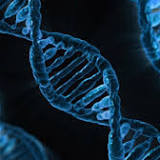Astronomers discover why a binary black hole system has the hiccups

In context: Binary systems composed of a supermassive black hole and a much smaller singularity orbiting around it are crucial for studying gravitational wave events. Detecting them, however, is extremely challenging. A newly discovered binary configuration could aid in identifying potential candidates for binary black hole systems.
In a galaxy 800 million light-years away from Earth, there's a supermassive black hole that had remained relatively quiet until December 2020. Back then, astronomers detected a faint burst of "light" in the X-ray portion of the electromagnetic spectrum. The burst occurred at an unusually regular interval, every 8.5 days.
According to the international team of astronomers studying the case, this peculiar phenomenon resembled a cosmic "hiccup" of sorts. A newly published study explains that these periodic hiccups are most likely caused by two black holes orbiting each other, with the smaller singularity colliding against the accretion disk of the supermassive black hole at the center of the distant galaxy.
MIT research scientist and co-author of the paper, Dheeraj "DJ" Pasham, noted that the NICER (Neutron star Interior Composition Explorer) X-ray telescope aboard the International Space Station played a crucial role in studying the occurrence of these cosmic hiccups. Pasham utilized his allotted time to focus the telescope on the galaxy emitting the X-ray burst.

After collecting four months of data, the researcher observed the 8.5-day dipping period of the highly energetic radiations. "It was almost like when a star's brightness dims when a planet crosses in front of it," Pasham said, "but in this case, an entire galaxy's brightness level was being affected."
Inspired by a theory published by Czech physicists about a supermassive black hole having a smaller orbiting companion, Pasham ran simulations with his own data collected through the NICER observatory. The data supported the Czech theory, but the mystery about the sudden appearance of X-ray bursts in December 2020 remained unsolved.
The researchers now suggest that the light bursts were caused by a "tidal disruption event" (TDE), a cosmic cataclysm involving a star being pulled by the gravitational influence of the black hole and then being ripped to shreds. The TDE provided enough material to enrich the faint accretion disc around the supermassive black hole, which, in turn, was being disturbed by the smaller black hole passing through the disk.
Pasham now suggests that these unusual binary black hole systems could be relatively common occurrences across the cosmos.


 United Kingdom
United Kingdom Argentina
Argentina  Australia
Australia  Austria
Austria  Brazil
Brazil  Canada
Canada  Germany
Germany  Ireland
Ireland  Italy
Italy  Malaysia
Malaysia  Mexico
Mexico  New Zealand
New Zealand  Poland
Poland  South Africa
South Africa  United States
United States 























